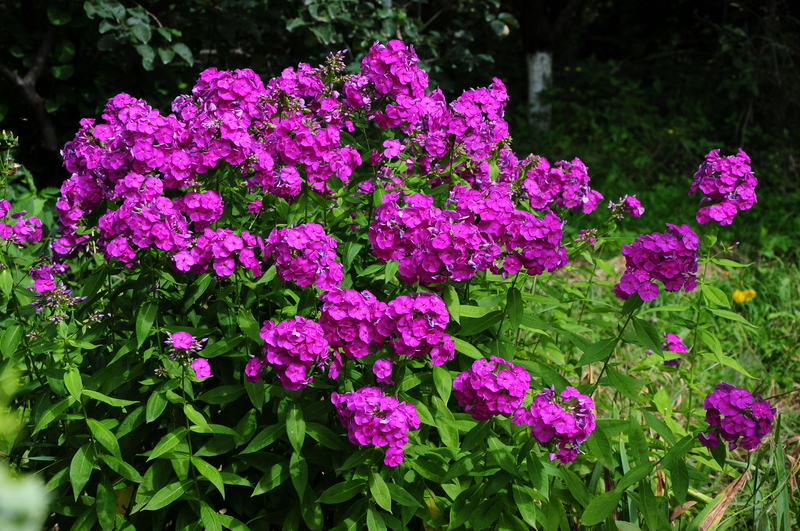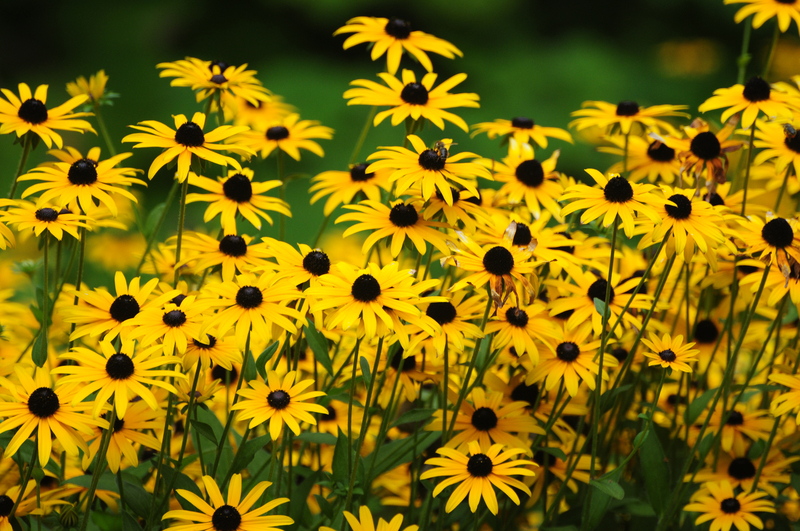Cultivate Stunning Orchids with Professional Care Tips
Posted on 22/06/2025
Cultivate Stunning Orchids with Professional Care Tips
Orchids are among the most elegant, diverse, and beloved houseplants cherished by botanical enthusiasts worldwide. Their fascinating forms, mesmerizing fragrances, and radiant blooms have captivated collectors and newcomers alike for centuries. Whether you are a beginner or seasoned plant parent, learning how to cultivate stunning orchids is an art that transforms any space into a serene oasis of beauty. Let's dive into comprehensive guidelines and professional care tips to ensure your orchids not only survive, but truly thrive.
Understanding the Basics of Orchid Cultivation
Orchids belong to the family Orchidaceae, encompassing over 25,000 species and more than 100,000 hybrids. They grow in diverse climates, ranging from humid rainforests to arid deserts. Before you start, it's essential to understand that not all orchids require the same conditions. However, some general principles apply to most varieties.
Common Orchid Types for Home Cultivation
- Phalaenopsis (Moth Orchids): Excellent for beginners, lush flowers with long-lasting blooms.
- Cattleya: Known for their vibrant colors and pronounced fragrances.
- Dendrobium: Hardy varieties that are relatively easy to maintain.
- Oncidium (Dancing Lady): Famous for their sprays of small, intricate blooms.
- Vanda: Prized for their dramatic flowers and aerial root systems.

Optimal Environment: Light, Temperature, and Humidity
Providing the ideal environment is vital in growing stunning orchids. Different species may prefer slightly different settings, but several core requirements remain universal:
- Light: Orchids thrive in bright, indirect light. Place them near eastern or southern windows where sunlight is filtered. Too much direct sun can scorch their leaves, while too little reduces blooming.
- Temperature: Most orchids flourish in daytime temperatures between 65-80?F (18-27?C) and cooler nights at around 60?F (16?C).
- Humidity: Orchids prefer moderate to high humidity levels, typically 40-70%. Use a humidity tray, misting, or humidifier to maintain appropriate moisture around your plants.
Professional Orchid Placement Tips
- Choose a spot away from drafts, air conditioners, or heaters.
- Avoid placing orchids on cold windowsills during winter.
- Regularly rotate your plant for even light exposure.
The Art of Watering Orchids
Correct watering is one of the most crucial - and misunderstood - aspects of orchid plant care. Overwatering is the leading cause of orchid decline. Here's how to do it like a pro:
Key Watering Techniques for Healthy Orchid Growth
- Assess the Medium: Water only when the potting medium (not just the surface) feels dry to the touch.
- Water Thoroughly: Soak the pot until water runs out of the drainage holes.
- Drainage is Essential: Never let orchids stand in water; good drainage prevents root rot.
- Morning Watering: Water in the morning to allow leaves to dry, minimizing fungus risk.
- Seasonal Adjustments: Orchids typically need less water in winter and more during their active growth (spring and summer).
Feeding Your Orchids: Fertilizing for Vigorous Blooms
Fertilization supports robust growth and stunning orchid flowers. Use specific orchid fertilizers, which offer the right balance of nutrients. Follow these guidelines:
- Choose Orchid-Specific Fertilizers: These are specially balanced for their unique needs.
- Frequency: Feed "weakly, weekly" with a diluted solution during the growing season (spring and summer).
- Flush Monthly: Rinse the potting medium with water monthly to remove fertilizer salts.
- No Fertilizer on Dry Roots: Always water lightly before fertilizing.
Choosing the Right Orchid Potting Medium
Orchid roots are highly adapted to their natural environments, often growing on trees rather than in soil. For most varieties, ordinary dirt won't do. Professional orchid growers use specialized mixes, such as:
- Bark (fir or pine), providing excellent aeration
- Sphagnum moss, which retains moisture
- Perlite or charcoal, promoting drainage and preventing compaction
The choice of medium depends on your orchid species, environment, and watering habits. Repotting every 1-2 years ensures a fresh, healthy environment and prevents rootbound conditions.
Repotting Orchids: Expert Steps
- Gently remove the orchid from its old pot.
- Trim away any dead or mushy roots with sterile scissors.
- Place in a new pot with fresh orchid mix, ensuring roots are well-supported but not compressed.
- Water lightly and avoid fertilizing for the first two weeks after repotting.
Orchid Health: Pest and Disease Management
Even with careful attention, orchids can fall prey to pests and diseases. Vigilance and prompt action are your best defenses:
- Common Orchid Pests: Aphids, spider mites, mealybugs, and scale insects. Use insecticidal soap or neem oil for control, and always isolate new plants.
- Disease Prevention: Ensure adequate air circulation and avoid water sitting in leaf axils to prevent fungal and bacterial rot.
- Sanitize Tools: Use clean, sterile equipment when repotting or pruning.
- Monitor for Trouble: Yellowing leaves, stunted growth, or soft spots may indicate a problem. Act quickly to prevent spread.
Encouraging Re-Bloom: Secrets from Orchid Professionals
Bringing your orchid back into bloom is the most rewarding moment for any grower. Follow these expert tips to cultivate stunning orchid blooms year after year:
- Light and Temperature Cues: A slight drop in nighttime temperature for a few weeks encourages spiking in many varieties.
- Prune Spent Flower Stems: For Phalaenopsis, cut just above a node to stimulate reblooming.
- Feed Appropriately: Switch to a bloom-boosting fertilizer when spikes appear.
- Patience Pays: Some orchids may rest for several months before flowering again.
Orchid Display and Styling for Home Decor
Orchids can transform the ambiance of any indoor setting. Here are some professional styling ideas to showcase your beautiful plants:
- Single Statement: Place a large, blooming orchid as a centerpiece on a dining or coffee table.
- Group Collection: Arrange multiple varieties and colors in staggered heights for a dramatic effect.
- Hanging Baskets: Display orchids in airy, hanging baskets to emphasize their graceful roots and blossoms.
- Terrariums: Miniature orchids with moss and stones make exquisite accents for desks or bookshelves.
Troubleshooting Common Orchid Problems
Even with perfect care, issues can arise. Here's how to address some frequent orchid challenges:
- No Blooms: Lack of flowers typically results from insufficient light or improper feeding. Adjust placement or fertilize accordingly.
- Leaf Drop: Overwatering, underwatering, or rapid environmental changes are common triggers.
- Root Rot: Ensure the potting medium drains well. If roots are brown and mushy, trim affected areas and repot with fresh mix.
- Wrinkled Leaves: Indicative of dehydration. Check watering habits and humidity levels.
Advanced Professional Orchid Care Tips
- Understand Your Variety: Each orchid species has unique needs. Research your orchid by name for the most specific care advice.
- Seasonal Adjustments: Tailor watering, feeding, and light exposure with the changing seasons to mimic their natural cycles.
- Observe and Respond: Orchids "speak" through their leaves, roots, and blooms--learning to read their signs leads to better care and flourishing plants.
- Join Orchid Communities: Tap into forums, clubs, and social media groups for advice, inspiration, and support from experts and fellow enthusiasts.

Conclusion: Enjoy the Journey of Cultivating Stunning Orchids
With knowledgeable care, patience, and keen observation, growing beautiful orchids is within everyone's reach. As each new bloom unfurls, you'll gain not only a gorgeous flower, but increased confidence and appreciation for the delicate dance of orchid cultivation. Experiment with different varieties, embrace the learning process, and don't be afraid to make mistakes--it's all part of the journey to cultivating truly stunning orchids at home.
Ready to transform your living space with these exotic beauties? Apply these professional orchid care tips and watch as your horticultural skills blossom along with your plants!
Frequently Asked Questions About Orchid Care
How often should I water my orchid?
Watering frequency varies by species and environment, but most orchids thrive with watering once a week. Always check the moisture in the potting medium before watering again.
When should I repot my orchid?
Repot when the potting medium breaks down, roots are overcrowded, or every 1-2 years. Signs include roots growing out of the pot or medium retaining excess moisture.
My orchid has stopped blooming. What should I do?
Increase sunlight exposure, fertilize during the active growth period, and create a nighttime temperature drop for a few weeks to encourage reblooming.
Can I grow orchids outdoors?
Some orchid varieties can be grown outdoors in warm, humid climates with filtered light. Always bring them indoors when temperatures threaten to fall below species-specific recommendations.
What's the best fertilizer for orchids?
Use a balanced fertilizer (20-20-20) formulated for orchids, applying it at one-quarter to half strength during active growth and switching to a bloom booster when spiking or flowering.
Want to learn more? Sign up for a local orchid society or subscribe to expert gardening newsletters for advanced care tips and inspiration!



